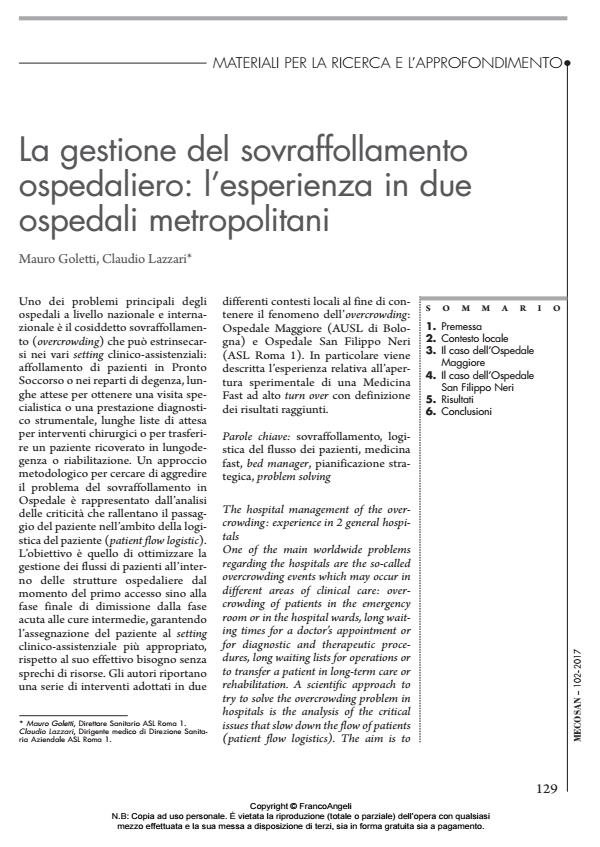La gestione del sovraffollamento ospedaliero: l’esperienza in due ospedali metropolitani
Journal title MECOSAN
Author/s Mauro Goletti, Claudio Lazzari
Publishing Year 2018 Issue 2017/102
Language Italian Pages 27 P. 129-155 File size 23800 KB
DOI 10.3280/MESA2017-102007
DOI is like a bar code for intellectual property: to have more infomation
click here
Below, you can see the article first page
If you want to buy this article in PDF format, you can do it, following the instructions to buy download credits

FrancoAngeli is member of Publishers International Linking Association, Inc (PILA), a not-for-profit association which run the CrossRef service enabling links to and from online scholarly content.
The hospital management of the overcrowding: experience in 2 general hospitals One of the main worldwide problems regarding the hospitals are the so-called overcrowding events which may occur in different areas of clinical care: overcrowding of patients in the emergency room or in the hospital wards, long waiting times for a doctor’s appointment or for diagnostic and therapeutic procedures, long waiting lists for operations or to transfer a patient in long-term care or rehabilitation. A scientific approach to try to solve the overcrowding problem in hospitals is the analysis of the critical issues that slow down the flow of patients (patient flow logistics). The aim is to optimize the flow of patients in hospitals from the first access to the final stage of discharge from the acute phase to the intermediate care, ensuring the assignment of the patient to the most appropriate clinical care setting, in relation to its actual needs avoiding waste of resources. The authors report a series of measures realized in two different backgrounds in order to oppose the overcrowding events: Maggiore Hospital (AUSL Bologna) and S. Filippo Neri Hospital Hospital (ASL Roma 1). In particular they describe the experience of the experimental opening of a Fast Medical Ward with high turnover and the definition of the results achieved.
Keywords: Overcrowding, patient flow logistic, fast medical ward, bed manager, strategic planning, problem solving
Mauro Goletti, Claudio Lazzari, La gestione del sovraffollamento ospedaliero: l’esperienza in due ospedali metropolitani in "MECOSAN" 102/2017, pp 129-155, DOI: 10.3280/MESA2017-102007